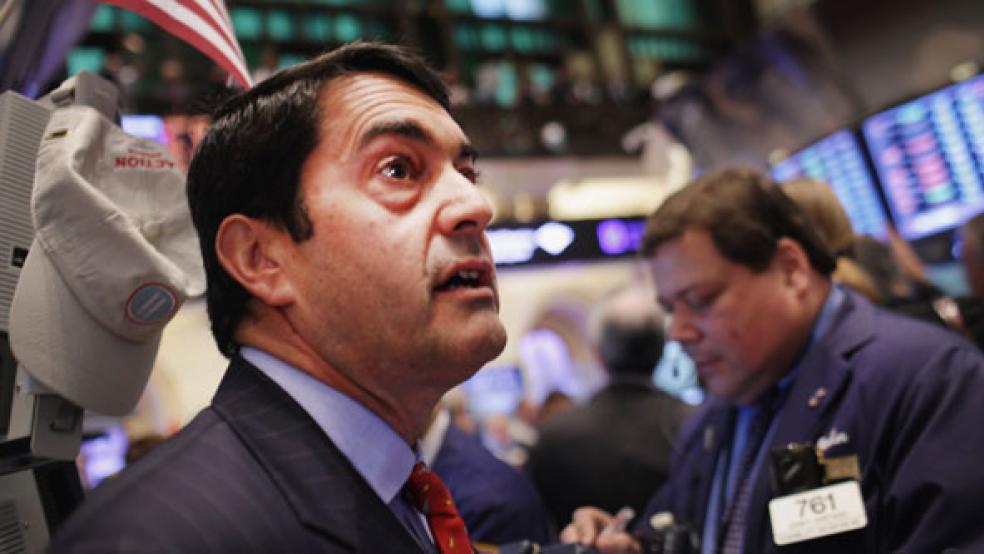While the end of easy monetary policy has been cast as the great enemy of the stock market, for some investors tapering can't happen soon enough.
Former Federal Reserve Chairman Alan Greenspan, during a Friday appearance on CNBC, struck a nerve when he suggested that central bank intervention actually was holding stocks back from even bigger gains.
While the man known as "The Maestro" stopped short of blaming Fed policy outright, he said "we've got to get moving" in terms of pulling back on easing, which he said likely will create a rise in asset prices.
At its root, the sentiment from taper supporters is that the Fed's insistence on treating the economy as if it needs emergency-like measures is thwarting confidence and keeping trillions in cash from coming off the sidelines and going to work.
"You could make a great case that the Fed should stay accommodative," said Jim Paulsen, chief market strategist at Wells Capital Management. "But do we really need Depression-style policy now? The fact that you've got the Fed doing that is hurting confidence out there."
In three phases of a program known as quantitative easing, the Fed has credited itself with more than $3.4 trillion that it has used to buy various types of debt—Treasurys and mortgage-backed securities during the most recent leg.
SIGN UPDuring QE, stock market gains have been massive, with the S&P 500 up 145 percent—approaching 1,000 points—since the March 2009 financial crisis lows.
Consistent economic strength has been harder to come by, though.
Gross domestic product increased just 2.4 percent in the first quarter, and second-quarter improvement could be about half that. Fed Chairman Ben Bernanke is likely to end his term without ever having presided over an economy that grew more than 3 percent on an annualized basis.
One of the primary culprits of the slow growth has been lack of confidence particularly at the corporate level, where companies are devoting far more cash to stock buybacks and dividend increases than capital expenditures and hiring.
Critics say the Fed, while using monetary policy to pull the country out of the crisis, has overstayed its welcome and fostered that lack of confidence through unprecedented measures that aren't necessary anymore.
"The Fed is still treating the patient like it's in the emergency room," said Liz Ann Sonders, chief investment strategist at Charles Schwab. "Yet the Fed also wants the patient to go out and leave the hospital and act normally. But you've got to disconnect the patient from the equipment if you expect it to go out in the world. We're treating the economy as if it's still in an emergency."
It's not as if companies don't have the money to spend.
Nonfinancial firms held $1.78 trillion on their balance sheets at the end of the first quarter, according to data the Fed released this week. That's a 2.6 percent increase from the previous quarter and about 30 percent higher than the 2008 crisis levels.
Household net worth improved to $70.3 trillion, a 6 percent increase from the previous quarter.
With housing in the midst of at least a normalization if not a robust recovery and employment steadying—Friday's nonfarm payrolls report showed 175,000 more jobs in May—the question arises over what exactly the Fed fears in refusing to begin normalizing its zero interest rate policy and easing back from the emergency QE liquidity measures.
"Now is the economy growing fast enough? No," Paulsen said. "But it is fundamentally functioning again. If you want to speed it up, the primary thing it lacks is confidence."
Virtually no one, including Paulsen, Sanders, or Greenspan for that matter, is suggesting the Fed take an aggressive posture toward normalization or ending QE.
But the calls may well start intensifying that the Fed at least begin loosening its grip on the economic wheel.
The central bank could begin to show some faith in the economy by, say, reducing its purchases by $7 billion a month, which would end QE3 completely in a year, according to a suggestion from Mitchell Goldberg, president of ClientFirst Strategy.
The Fed has said it will not increase interest rates until unemployment falls to 6.5 percent—the rate actually increased last month to 7.6 percent—and inflation rises to 2.5 percent, from its current 1.1 percent.
However, a reduction in QE asset purchases likely will come first.
"QE is about a response to an emergency situation. I don't feel that we are in an emergency situation anymore," Goldberg said. "So it's time to curtail the QE and for the Fed to actually reload its ammo to get ready for the next crisis, which we know one day is inevitable."
This piece originally appeared in CNBC.com.
Read more at CNBC:
Greenspan: Taper Now, Even If Economy Isn't Ready
Housing Grows, Hiring Slow, Sequester Hits: Fed
Companies Spending Cash on Investors, Not Workers




